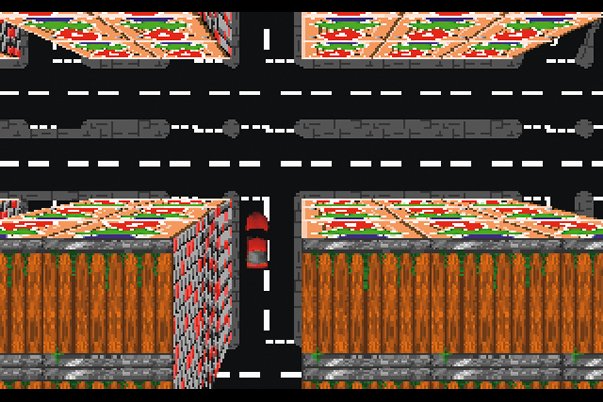Platform games had served DMA well and Dailly had been impressed by the new graphical approach from Sega's Clockwork Knight. Although at heart a traditional side-view platformer, Knight used the 3D abilities of the new Saturn console to add a perspective display to the platforms. This gave them a convincing depth, the end nearest the player looming large, and reducing as it receded into the distance. Dailly had prototyped the effect, and liked it. Could DMA use this approach for a new game of its own?
A chance remark about top-down racing games, however, got Dailly thinking: "It occurred to me that although I had a side-on engine, all I needed to do was add a floor, and it could be an above engine. So, with programmer graphics, I set about using the previous prototype as a base."

Above: Dailly's living city prototype was designed to allow collapsible buildings
He showed the game to studio boss Dave Jones, who was immediately impressed: "It was a good-looking technical demo," he recalls. "By staying with this pseudo-3D engine we could populate the world quite heavily compared to full 3D cities. With the camera attached to a car it would pull out quite a distance as you travelled faster. You got a great sense of depth."
The constrained viewpoint allowed Jones to flesh out the concept by concentrating on what was in the city, rather than on what it looked like. "I wanted to create as busy a city as possible. I felt that a classic cops and robbers style of game would really appeal." Race 'n' Chase was born and pitched to BMG as a title that Jones wanted to develop.
Click here to read part two of our three part 'The making of Grand Theft Auto' feature
Click here to read the final instalment of our three part 'The making of Grand Theft Auto' feature
Weekly digests, tales from the communities you love, and more


